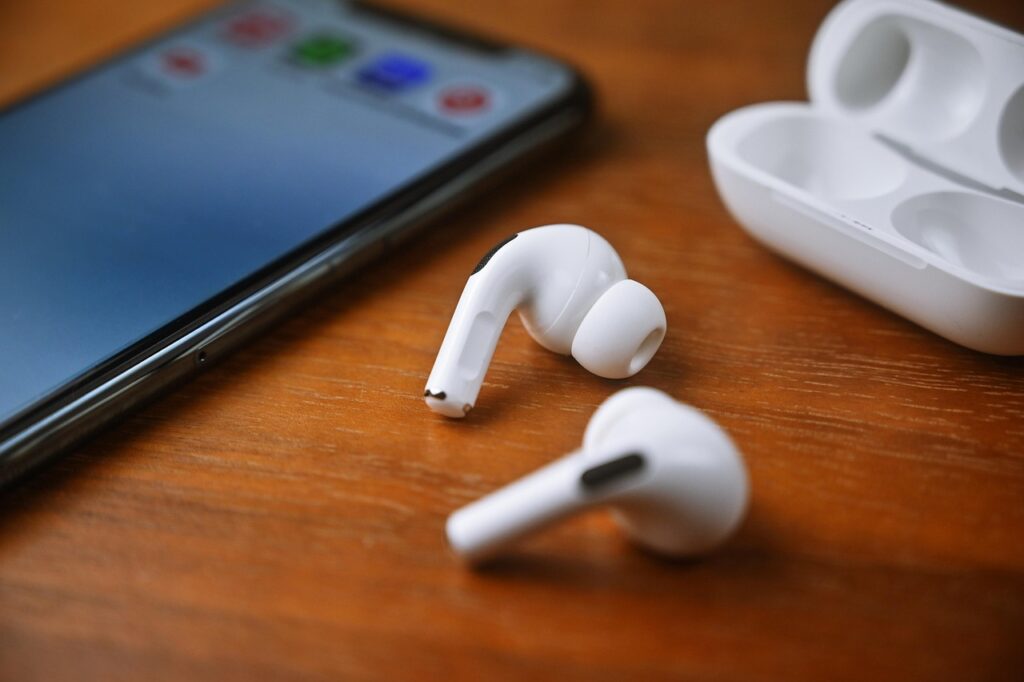Earbuds: UK’s Soundtrack Staple
Earbuds are everywhere in 2025—tucked into UK commuters’ ears on Tubes, powering gym sessions, and drowning out office chatter. With 3.2 million pairs sold yearly (Statista, 2025), they’ve outstripped over-ear headphones. Wireless tech, sweatproof designs, and £20-£200 price tags make them a British must-have. But their rise ties to a bold shift: the death of the 3.5mm jack plug. Let’s unpack how earbuds took over, why the jack vanished, and the controversies that sparked.
Early Days: Wired and Clunky
Earbuds started small—Sony’s 1982 MDR-E252, wired to Walkmans, delivered tinny sound for £15. By 2001, Apple’s iPod earbuds (white, iconic) hit UK shelves, boosting sales to 500,000 pairs (Which?, 2002). The 3.5mm jack plug, born in the 1950s, was king—every phone, MP3 player, and laptop had one. Earbuds were cheap (sub-£10 by 2010), but cords tangled, and sound lagged behind studio cans. Still, their portability won fans.
2016: The Jack Plug’s Demise
Apple lit the fuse in 2016, ditching the headphone jack on the iPhone 7. “Courage,” they called it; critics cried greed. The 3.5mm port—universal, reliable—vanished to push AirPods (£159). By 2018, Samsung and Google followed, axing jacks from Galaxy and Pixel lines. UK sales of wireless earbuds jumped 200% to 1.5 million (Kantar, 2019), with 60% of 18-34-year-olds owning a pair (YouGov, 2019). Adapters (£9) and dongles cluttered bags, but Bluetooth won—5.0 tech cut lag, boosted range to 10m.
Why Kill the Jack?
Makers claimed jacks ate space, blocking bigger batteries or slimmer phones. Water resistance improved sans ports—IP68 earbuds (e.g., 2025 models) shrug off rain. Yet controversies flared:
- Cost: AirPods cost £159 vs. £20 wired buds. X posts raged—#BringBackTheJack hit 500k tweets in 2017, calling it a cash grab.
- E-Waste: Wired buds became obsolete; 50,000 tons of headphone waste hit UK landfills by 2020 (Greenpeace).
- Sound Quality: Audiophiles scoffed—Bluetooth’s compression (AAC, 256kbps) trailed wired’s lossless audio.
By 2025, only 5% of UK phones have jacks (Mintel), mostly budget models. Wireless ruled, but not without pushback.
2020-2025: Wireless Takes Over
Post-jack, earbuds soared. Sony’s WF-1000XM5 (£199, 2025) and Jabra’s Elite 10 (£149) pack noise cancellation, 8-hour batteries, and eco-friendly cases (30% recycled plastic). UK sales hit 3.2 million, with £50-£100 pairs leading (Statista). Features like touch controls and AI voice tweaks (e.g., auto-pause in crowds) make them gym-to-office stars. TikTok’s #EarbudsHacks (1.8 billion views) shows hacks—cleaning tips, fit tweaks. Like air fryers cutting oil in our Best Air Fryers post, earbuds cut cords for freedom.
Controversies Linger
The jack’s demise still stings. Repair shops report 20% more earbud fixes vs. wired—batteries die in 2-3 years (iFixit, 2025). X users slam planned obsolescence, with 2023 petitions for jack returns gaining 100k signatures. EU laws now mandate USB-C ports, but jacks? No comeback. Wireless earbuds’ carbon footprint—10kg CO2 per pair—sparks eco-debate, though brands pledge net-zero by 2030.
Why Earbuds Win UK Ears
Earbuds blend ease and tech—£30 pairs match 2010’s £100 wired sets. From Apple’s jack gamble to 2025’s wireless boom, they’re UK’s audio pulse. Pair them with a brew—check why coffee’s topping tea in our coffee post. Got earbud tips? Share below!

